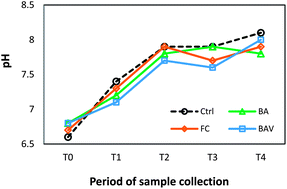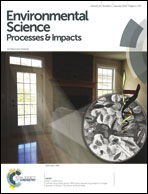Effects of sugarcane waste-products on Cd and Zn fractionation and their uptake by sugarcane (Saccharum officinarum L.)
Abstract
The effects of three sugarcane waste-products from an ethanol production plant on the fractionation of Cd and Zn in high Cd and Zn contaminated soil and metal accumulation in sugarcane (Saccharum officinarum L.) were studied, using the BCR sequential extraction and aqua regia extraction procedures. A pot experiment was performed for 4 months with four treatments: no-amendments (control), boiler ash (3% w/w), filter cake (3% w/w) and a combination of boiler ash and vinasse (1.5% + 1.5%, w/w). The results showed that all treatments reduced the most bioavailable concentrations of Cd and Zn (BCR1 + 2) in soils (4.0–9.6% and 5.5–6.3%, respectively) and metal uptake (μg) in the aboveground part of the sugarcane (up to 62% and 54% for Cd and Zn, respectively) as compared to the control. No visual symptoms of metal toxicity and no positive effect on the biomass production of sugarcane were observed. Both Cd and Zn were accumulated mainly in the underground parts of the sugarcane (root > shoot ≥ underground sett > leaf; and root > underground sett > shoot > leaf, respectively) and the translocation factors were below 1, indicating low metal uptake. The results suggested that even though sugarcane waste-products insignificantly promote sugarcane growth, they can be used in agriculture due to the low metal accumulation in sugarcane and the reduction in metal bioavailability in the soil.


 Please wait while we load your content...
Please wait while we load your content...